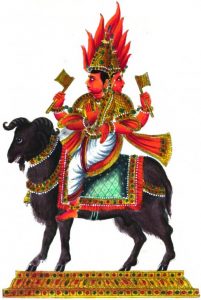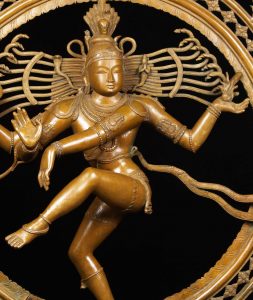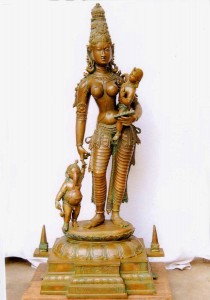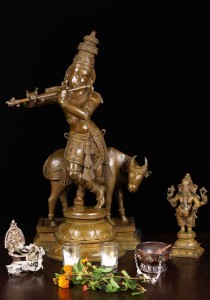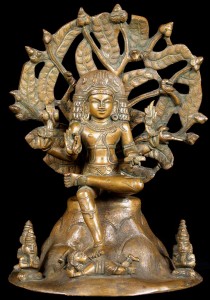‘He under whose supreme control are horses, all chariots, the villages, and cattle;
He who gave being to the Sun and Morning, who leads the waters, He, O men, is Indra.’
Rigveda
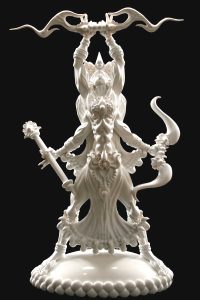
Originally, Indra was one of the most prominent deities within the Rigveda as the leader of the Gods and Lord of Heaven according to Hindu myth. He was the God of war, storms, thunder, and the ultimate warrior carrying his famous lightning bolt, Vajra, as weapon protecting Dharma alongside Vajrapani, the Chief Defender. Indra, Agni’s twin, was said to be the strongest of all beings defending all the Hindu Gods and humans alike from danger. Indra was described as being very powerful with either two or four very long arms wielding his bolt or at times bow or hook. His parents were the sky god Dyaus Pita and the earth goddess Prthivi. It is even said he was born fully grown and fully armed from his mother’s side ready to defend the world.
His most notable achievement was fighting the asura Vrita who in form of a mighty dragon stole all the water from the earth. When Indra was born he heard of the offenses of Vrita and fought to reclaim the precious water he had stolen form the world. He rode forth to seek him out, smashed through all 99 of Vritra’s fortresses, and battled Vrita as dragon and destroyed him. Water began flowing from his fallen adversary after battle which restored the earth from its perpetual drought. Replenishing the land of its most necessary nutrient, Indra became a hero not only to the people, but to the Gods alike. In show of allegiance the gods elected him as their king.
Although a notable deity within the Rigveda, over time Indras importance as a prominent deity began to diminish in favor of Vishnu and Shiva. More recent accounts of his famous battle even include his rescuing by Vishnu and Shiva in order to defeat the dragon. He was eventually demoted to that of simply god of weather and of the lesser gods.
Click for more information on Vishnu and Shiva from Lotus Sculpture

